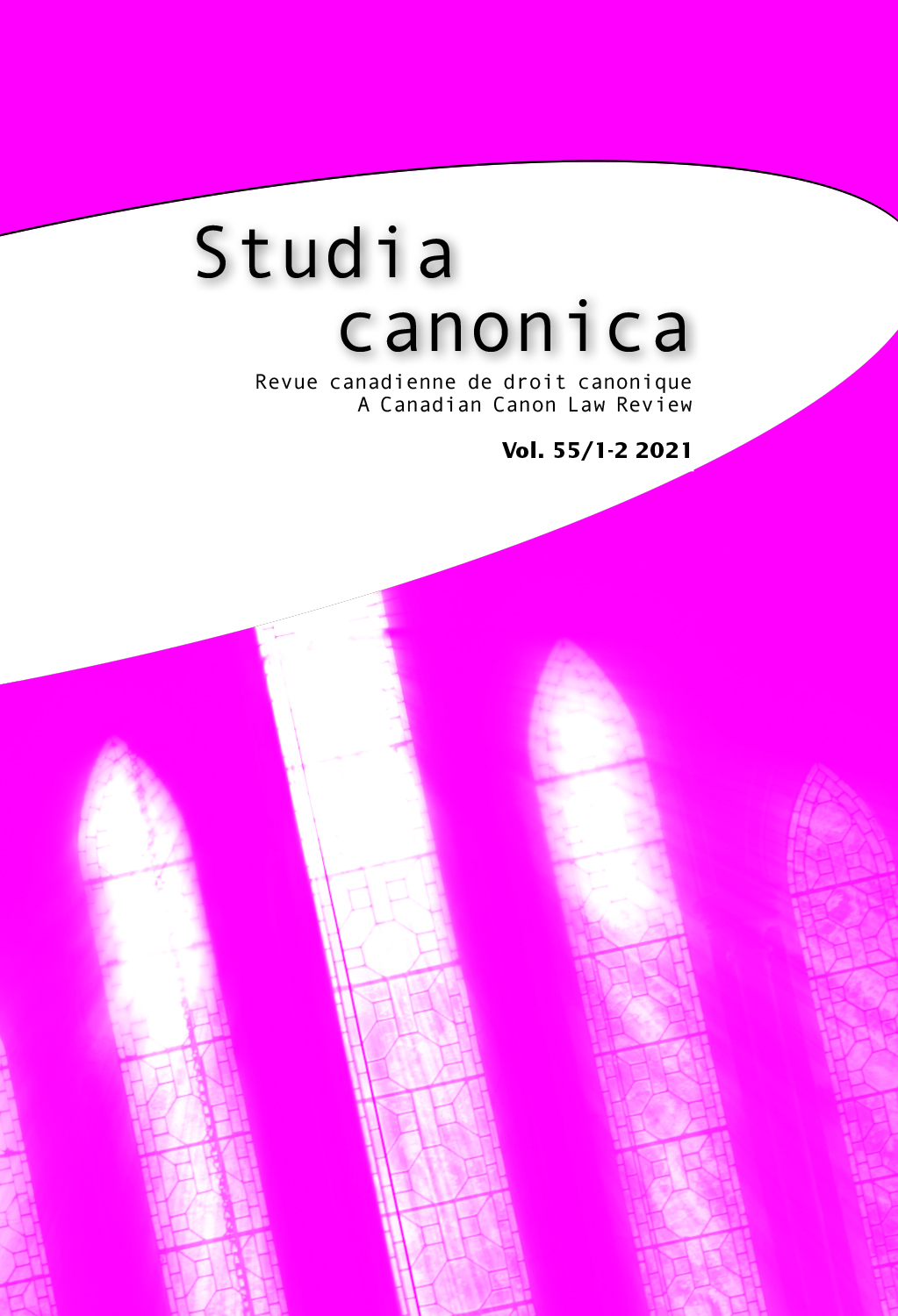 previous article in this issue previous article in this issue | next article in this issue  |

Preview first page |
Document Details : Title: Le secret des délibérations du jury et du conclave Author(s): CAMIRAND, Daniel Journal: Studia Canonica Volume: 52 Issue: 2 Date: 2018 Pages: 331-374 DOI: 10.2143/STC.52.2.3286247 Abstract : S’inscrivant dans une perspective de droit comparé, l’article brosse l’histoire de l’institution du jury et de celle du conclave, deux institutions nées au détour du XIIIe siècle, dans la foulée de la réforme grégorienne. Il s’intéresse particulièrement au développement et au contenu des normes relatives à la claustration des jurés et des électeurs, à l’incommunicado et au secret perpétuel des délibérations. La similarité des normes étudiées tient notamment au fait que, dans les deux instituitons, elles jouent un rôle semblable. Le secret est intimement lié à la qualité des délibérations, à la préservation du caractère définitif de la décision prise, à la protection contre les ingérences extérieures et à la protection personnelle des jurés et des cardinaux électeurs. Bien que fondamental, on voit que le secret pose certains défis, à l’ère de l’information et de la multiplication des réseaux de communication. Written from the perspective of comparative law, the article draws on the history of the institution of the jury and that of the conclave, two institutions born around the 13th century, in the wake of the Gregorian reform. The author is particularly interested in the development and content of the norms relating to the secrecy of jurors and voters, the incommunicado and the perpetual secrecy of deliberations. The similarity of the norms studied is due to the fact that, in both institutions, they play a similar role. Secrecy is closely linked to the quality of the deliberations, the preservation of the final character of the decision taken, the protection against outside interference, and the personal protection of jurors and cardinal electors. Although fundamental, we see that the secret poses certain challenges, in this era of information and the multiplication of communication networks. |
|


